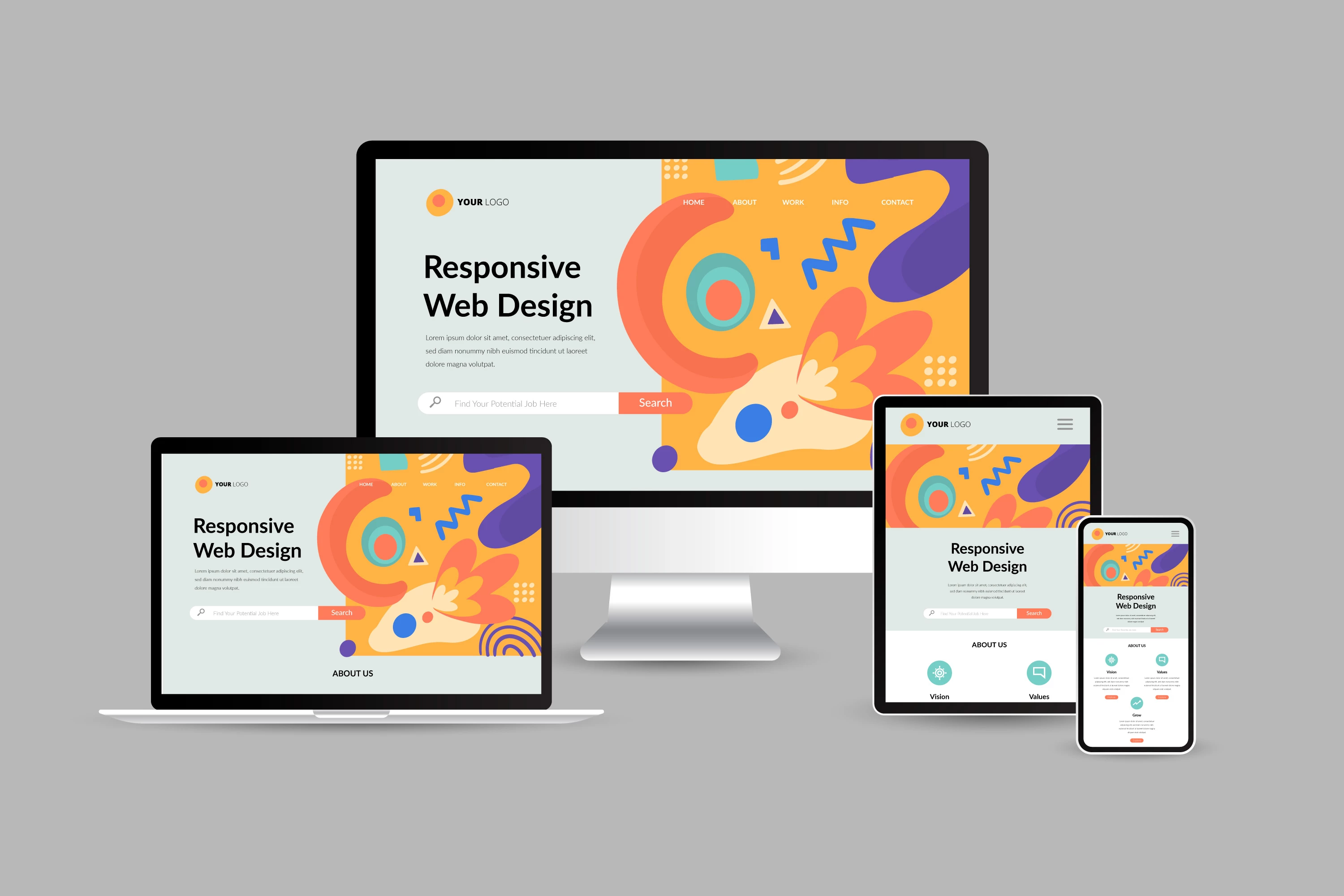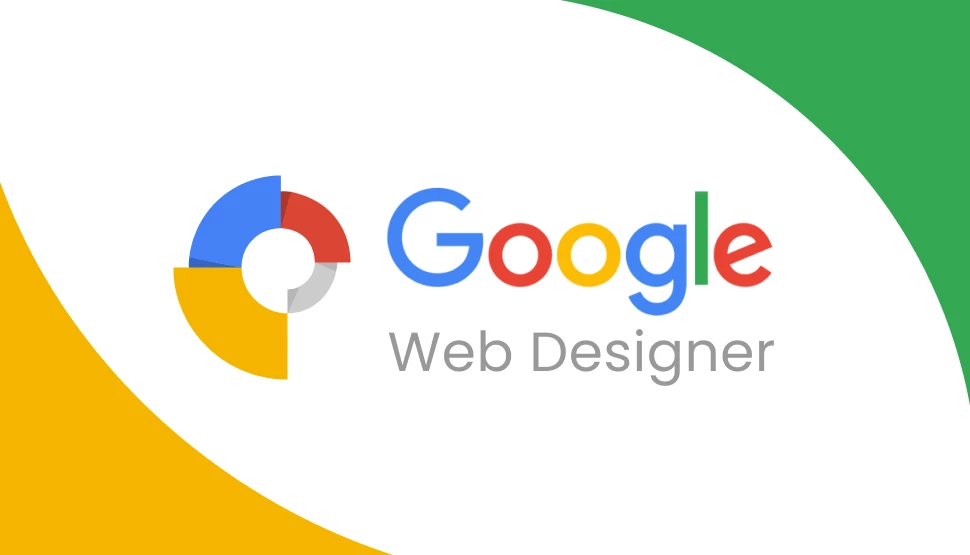Essential Website Design Factors: A Comprehensive Guide
5 mins | Aug 08, 2023
Ever wondered what makes those jaw-dropping websites stand out from the rest, leaving you utterly spellbound? You know the ones – they beckon you to click, explore, and get lost in their alluring content web.
Well, get ready to buckle up because we're about to discuss the Important Factors to design a website. Brace yourself; this is a game-changer!
Imagine if your website could be a captivating online oasis that draws visitors in like bees to honey. They can't resist clicking through, scrolling down, and falling head over heels with everything they see. Sounds like an impossible dream. But hold on tight because we're here to transform that dream into a dazzling reality!
Welcome to this blog, where we're on a thrilling mission to unlock the boundless potential of website design greatness. Are you prepared to discover the true power of your website and unleash its potential to dazzle your audience? Are you eager to learn the secrets behind creating a website that not only wows but leaves an unforgettable mark on your visitors?
If your answer is a resounding "YES," let's dive headfirst into this digital adventure and make some magical online masterpieces together! Are you ready? Let's get started!
9 factors to consider for website design
I. Better UI & UX

UI (User Interface) and UX (User Experience) are the power-duo that can make or break a website's success. Better UI & UX are the magical ingredients for creating sites that captivate users and leave them in awe.
These elements shape a website's success, from intuitive navigation to designing a website layout. Let's understand and explore the magic behind creating better UI & UX that leaves users in awe.
Understanding UX and UI, The Cornerstones of Web Design:
UX is about crafting a seamless and enjoyable user experience, focusing on how visitors feel and interact with a website. On the other hand, UI deals with the visual elements and design components that users interact with, like buttons, icons, and layouts. Together, they form the backbone of a remarkable website that captivates visitors from the get-go.
The Role of Intuitive Navigation, User-Friendly Layout, and Responsive Design:
Intuitive navigation ensures that users can effortlessly find what they're looking for. A well-organized menu and clear pathways enhance the user experience, reducing frustration and keeping them engaged.
A user-friendly layout considers visual hierarchy and content presentation, making it easy for users to absorb information and take action. Responsive design is vital in today's mobile-centric world, ensuring your website looks and works flawlessly across all devices, from desktops to smartphones.
Inspiring Examples of Websites with Exceptional UX and UI:
Look no further than giants like Apple and Airbnb, who have nailed UX and UI design. Apple's website charms users with its minimalist elegance and smooth navigation, while Airbnb's intuitive platform seamlessly connects users with their dream destinations. Closer to home, Slack's user-friendly layout and Dropbox's responsive design are exceptional examples of how better UI & UX can create a delightful experience.
So, let's roll up our sleeves and begin crafting better UI & UX, elevating our websites to new heights of user satisfaction and engagement!
Further Reading: 5 Ways AI Is Revolutionizing Website Design
II. Clear and Purposeful Branding

We all know that a solid and consistent brand identity is the secret sauce that sets successful businesses apart. It's time to learn more about the world of clear and purposeful branding and unlock the potential to captivate your audience like never before.
Establishing a Strong and Consistent Brand Identity:
Branding is more than just a logo; it's the essence of who you are as a brand. A well-defined brand identity builds trust, establishes credibility, and fosters loyalty among your audience. Consistency across all touchpoints, from your website to social media, reinforces your brand's message and leaves a lasting impression on customers.
The Art of Crafting a Cohesive User Experience:
Branding elements like logos, colour schemes, and typography build a cohesive user experience. A thoughtfully designed logo is a visual anchor, instantly recognizable and conveying your brand's personality. Carefully chosen colours evoke emotions and reinforce your brand's values. Typography sets the tone and readability, elevating the user experience.
Aligning Branding with Purpose and Target Audience:
Your website's branding should align seamlessly with your purpose and speak directly to your target audience. Consider your brand's values, mission, and unique selling proposition. Tailor your branding elements to resonate with your ideal customers, speaking their language and addressing their needs.
Precise and purposeful branding is the magical ingredient that breathes life into your brand and captivates your audience. Embrace your brand's uniqueness, align it with your purpose and audience, and watch as your brand becomes a force to be reckoned with in the digital market!
III. Mobile Optimization

The rise of mobile users is undeniable; making mobile-optimized websites is a must. Let's understand the increasing importance of mobile optimization and the keys to crafting seamless user experiences across various devices.
The Mobile Revolution, Embracing the Mobile Audience:
With mobile devices becoming the go-to for accessing information and services, catering to mobile users is no longer optional; it's a must. Mobile optimization ensures that your website is accessible, navigable, and visually appealing on smartphones and tablets, capturing the hearts of your on-the-go audience.
Responsive Design, Crafting Cohesive User Experiences:
Responsive design is the magic wand that transforms your website into a flexible masterpiece. The responsive design guarantees a seamless user experience across devices by adapting to different screen sizes and orientations. Whether your audience is swiping on a smartphone or clicking on a desktop, your website will shine bright with consistent branding, fluid layouts, and easy navigation.
Mobile Optimization and SEO:
Beyond impressing users, mobile optimization works wonders for search engine rankings. Google and other search engines prioritize mobile-friendly websites, rewarding them with higher visibility in search results. When your website is optimized for mobile, you boost your chances of reaching a wider audience and standing out in the competitive digital landscape.
Not only will you captivate your audience with flawless experiences, but you'll also rise to the top of search engine rankings. So, take advantage of this opportunity to empower your brand and conquer the mobile world!
Further Reading: 15 Best Website Designs for Banks & Financial Institutions
IV. Website Loading Speed

A website's loading speed is the turbocharge that can make or break user engagement and search engine rankings. Buckle up as we explore the importance of speed and uncover the secrets to optimizing your website's loading time.
The Need for Speed, Driving User Engagement, and SEO Success:
In today's attention-deficit era, users demand speed. Slow-loading websites drive visitors away faster than a race car, leading to higher bounce rates and diminished user engagement. On the other hand, speedy websites keep users engaged, boosting satisfaction, and encouraging them to explore more.
But that's not all – the need for speed extends beyond users. Search engines like Google prioritize fast-loading websites, rewarding them with higher search rankings. Speed is a crucial SEO factor that propels your website toward the front of the digital race.
Mastering the Art of Speed, Optimizing Website Loading Time:
Ready to unleash your website's full-speed potential? Start by compressing images without compromising on quality. Smaller image sizes accelerate loading times without sacrificing visual appeal. Embrace caching, allowing browsers to store website data, resulting in faster page loading upon return visits.
Minimize HTTP requests by optimizing your code and reducing unnecessary elements. Consider leveraging Content Delivery Networks (CDNs) to distribute your website's content across multiple servers worldwide, reducing latency and boosting loading speed for users worldwide.
V. Content Strategy

High-quality and relevant content is the driving force behind exceptional website design. Let's understand the power of content strategy and how it plays an important role in captivating your audience while achieving business goals.
Fueling Website Design with Compelling Content:
Quality content is the heart and soul of website design. Engaging articles, captivating visuals, and informative resources keep visitors coming back for more. Whether it's a blog, product descriptions, or an enticing About Us page, every content should be carefully crafted to leave a lasting impact on your audience.
Target Audience and Business Goals:
A successful content strategy goes hand in hand with understanding your target audience and business objectives. Tailor your content to resonate with your ideal customers, speaking their language and addressing their needs. Whether your goal is to increase brand awareness, drive sales, or educate your audience, align your content with those objectives to maximize its impact.
Crafting Content for Maximum Impact: Structuring, Visuals, and Calls-to-Action
Structure your content clearly and organized, making it easy for users to find what they're looking for. Use eye-catching visuals to enhance your content's appeal and improve readability. Incorporate compelling calls-to-action that prompt visitors to take desired actions, such as subscribing to a newsletter or purchasing.
VI. Accessibility and Inclusivity
Do you know, Inclusivity is the heartbeat that ensures every user feels welcome and valued? Creating websites that are accessible to all, including those with disabilities, is not just an option; it's a responsibility. Let's explore the significance of accessibility and Inclusivity and discover the keys to designing a website that embraces diversity.
The Power of Accessibility
An inclusive website is a bridge that connects users of all abilities to the digital world. Accessibility means removing barriers that might hinder someone with a disability from accessing and navigating your website. By providing alternative text for images, clear headings, and keyboard navigation, you create an inclusive space that caters to a diverse audience.
Guidelines for Inclusive Website Design
Designing and developing a website involves embracing best practices and guidelines that prioritize user experience for all. Use clear and readable fonts, and contrasting colours, and consider the needs of users with vision impairments. Make sure your website works seamlessly with screen readers and assistive technologies. Properly structure your content with headings and labels to aid screen readers in conveying information effectively.
Tools and Resources for Enhanced Accessibility:
Testing and improving accessibility can be simplified with various tools and resources. Use accessibility validators and testing platforms to identify and fix potential issues. Refer to Web Content Accessibility Guidelines (WCAG) to ensure compliance with international standards. Reach out to disabled user groups for valuable feedback on user experience.
Accessibility and Inclusivity are the heart and soul of a truly user-centric website. Embrace diversity, follow guidelines, and leverage accessible webpage design tools to create a digital space that opens doors for all users.
Further Reading: Why your business needs a digital marketing agency?
VII. SEO Considerations

Search Engine Optimization (SEO) is the compass that guides your website toward increased visibility and traffic. Let's embark on an SEO journey and discover the essential elements that can transform your website's online presence.
Navigating Website Visibility and Traffic:
SEO is optimizing your website to rank higher in search engine results, making it more visible to potential visitors. When your website appears on the first page of search results, it's like shining a spotlight on your virtual storefront. Improved visibility attracts more organic traffic, opening doors to new opportunities and potential customers.
The On-Page SEO Magic:
On-page SEO focuses on optimizing individual web pages for search engines. Start with crafting descriptive and engaging meta tags (title and meta description) that entice users to click through to your website. Create clean and concise URLs that accurately represent your page content. Strategic keyword optimization ensures that your content aligns with what users are searching for, boosting your chances of appearing in relevant searches.
Creating Content that Delights:
While SEO is essential, it should never overshadow user experience. Crafting SEO-friendly content requires a delicate balance. Write for your audience first, ensuring your content is valuable, engaging, and easy to understand. Incorporate keywords naturally, avoiding keyword stuffing that can negatively impact user experience and search rankings.
Remember to prioritize user experience while creating SEO-friendly content, striking the perfect harmony between website visibility and user delight.
VIII. Security and Privacy

Security and privacy are the fortress that protects user data and upholds website integrity. Let's understand the importance of implementing robust security measures, ensuring the safety of user information, and instilling confidence in your audience.
The Imperative of Security Measures:
Security measures are the armour that shields your website and user data from cyber threats. Strong security protocols prevent sensitive information, such as personal details and payment data, from falling into the wrong hands. It's not just about protecting your website; it's about safeguarding the trust and confidence users place in you.
The Power of SSL Certificates and Data Encryption:
SSL certificates encrypt data during transmission, transforming it into an unreadable code for unauthorized eyes. This encryption is vital, especially during online transactions, preventing hackers from intercepting and misusing sensitive data. By prioritizing data encryption, you offer users peace of mind, knowing their information is secure.
User Trust - The Precious Outcome of Website Security:
Website security directly impacts user trust and confidence. Users are more likely to engage with your website and share their information when they feel protected. A secure website builds credibility, encouraging repeat visits and fostering long-term relationships with your audience.
By prioritizing website security, you safeguard sensitive data and cultivate trust and confidence among your users, forming the pillars of a strong and reputable online presence. Secure your website, protect your users, and watch trust and loyalty flourish!
Further Reading: Digital Marketing vs Traditional Marketing: Which one is better?
IX. Tracking and Analytics

Tracking and analytics are the watchful eyes that uncover the secrets of user behaviour and website performance. Let’s see how data-driven insights can empower your design decisions.
The Magic of Website Analytics - Understanding User Behavior and Performance:
Website analytics is like a treasure trove of data that reveals how users interact with your website. It uncovers valuable insights, such as which pages users visit the most, how long they stay, and what actions they take. By monitoring user behaviour, you gain a deep understanding of what works and what needs improvement, paving the way for website enhancements that captivate your audience.
Empowering Data-Driven Design Decisions
Popular analytics tools like Google Analytics offer a wealth of data that needs to be interpreted to make informed design decisions. By analyzing metrics such as bounce rate, click-through rate, and conversion rates, you can identify areas for improvement and fine-tune your website's performance. For example, if users are dropping off from a specific page, you can investigate and optimize that page to keep users engaged.
Data-driven webpage design decisions improve user experience, boost conversion rates, and achieve business goals. The power of analytics lies in its ability to guide your design choices, ensuring that data and insights back every tweak and improvement.
Conclusion
In this blog, we've explored the important Factors to design a website that can make a difference in captivating your audience and achieving digital success.
From embracing clear and purposeful branding to optimizing loading speed and mastering the art of mobile responsiveness, we've uncovered the magic behind creating websites that wow users. Remember, accessibility and Inclusivity are the heartbeats of a truly user-centric website, opening doors for all users to explore and engage.
Now, it's your turn to take action. Let your website shine with a strong brand identity, lightning-fast loading speed, and a mobile-friendly experience that delights every user.
Feeling overwhelmed or looking to take things to the next level? Don't hesitate to seek professional assistance from our skilled website designers, who can bring your vision to life. Keep learning, exploring, and staying updated on website design best practices to stay ahead of the digital curve.
Seize the knowledge gained here and infuse your webpage design projects with innovation, passion, and user-centricity. Let's make your website a digital masterpiece that leaves a lasting impact on every visitor. Get ready to elevate your website design to new heights of excellence!
Author

Share
Other Articles

The Future Of Responsive Web Design: Emerging Trends, Innovations And Predictions In 2025
7 mins : Apr 23, 2024

Top Website Design for Real Estates That You Must Know
6 mins : Nov 24, 2023

Top 21 Websites to get license-free images in 2024
6 mins : Dec 15, 2021



